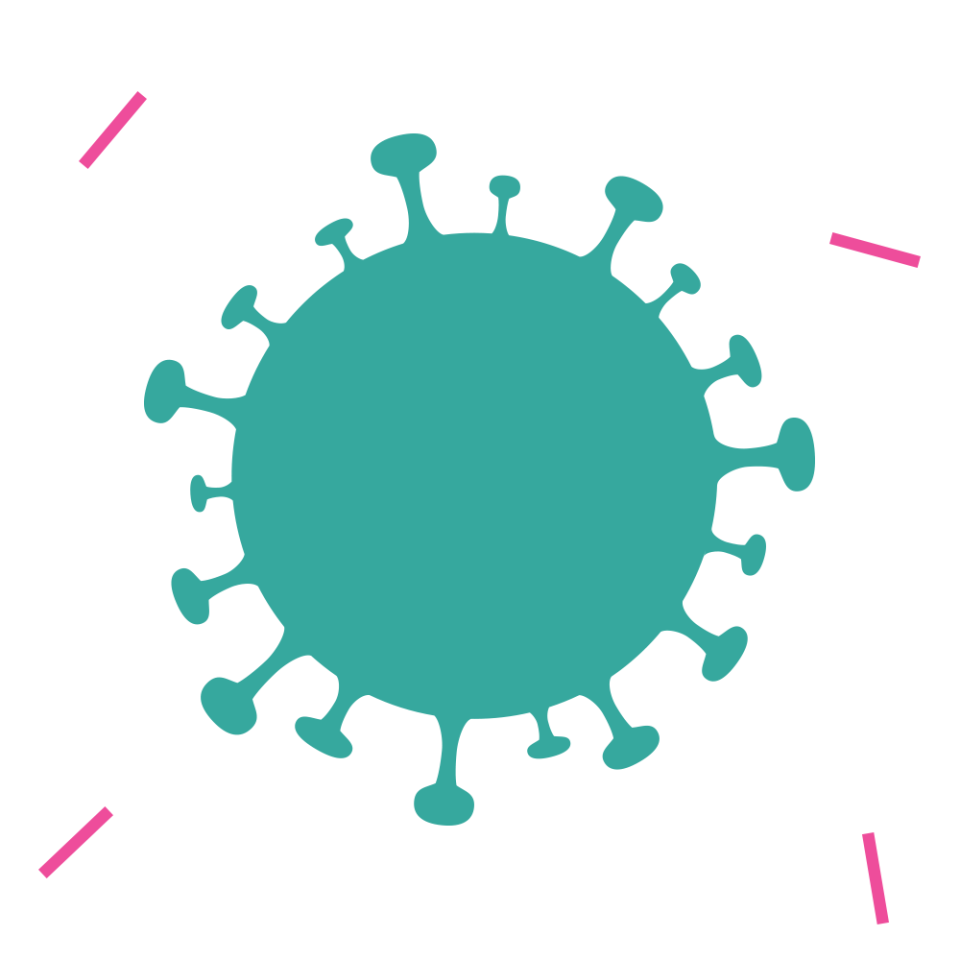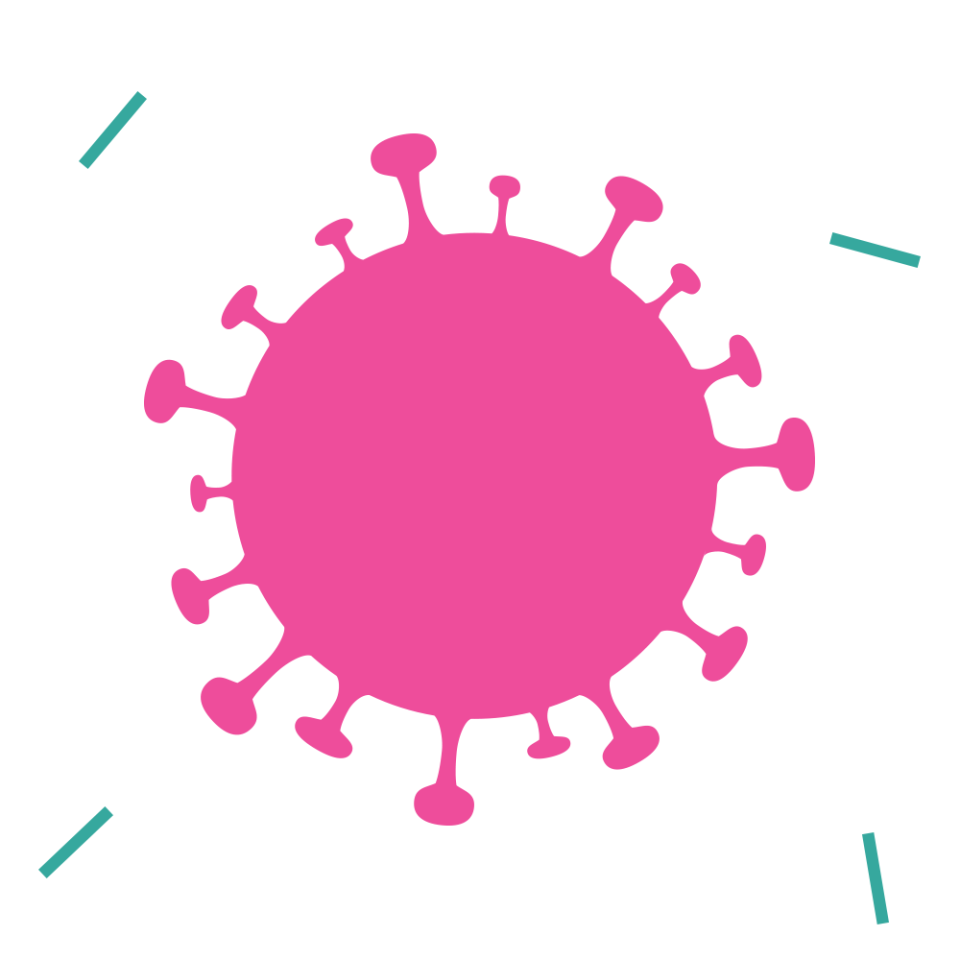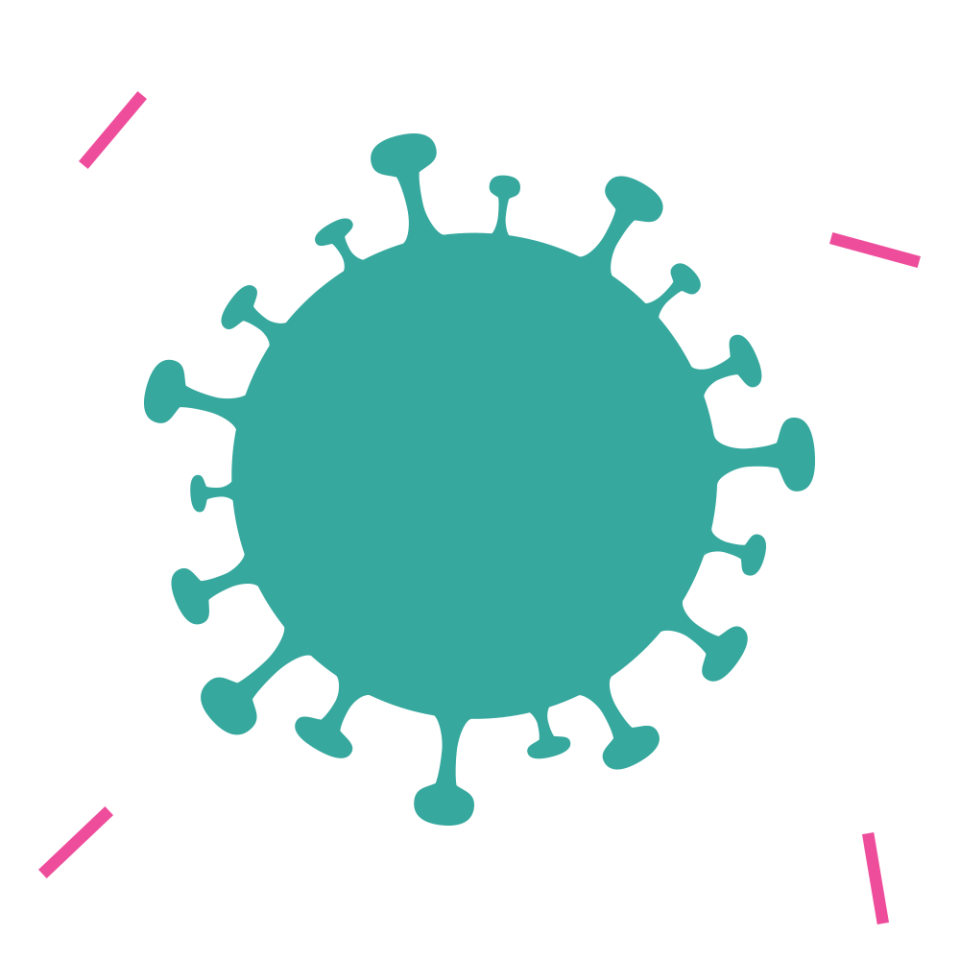The women living with Long COVID: What happens when coronavirus won't go away

As the teacher on the screen contorted her body into an effortless downward dog, Claire crumpled, despondent, into a motionless heap on the floor. Fifteen minutes into her online yoga class, and she was defeated. Her body - one that had been strong, resilient, able just months before – could no longer do the things she wanted it to do. It felt like it was failing her.
Confirmed cases of coronavirus have recently surpassed 40 million globally, with deaths exceeding one million. Undoubtedly miserable statistics, but one thing they do illustrate is that the vast majority of those who fall ill with COVID-19 go on to make a recovery. As the pandemic rolls on, however, it’s becoming clear that this isn’t always as straight forward as it sounds. Enter: Long COVID, the name medics are giving to the curious cases in which coronavirus patients – usually those who suffered with a mild or moderate case of the bug – just don’t seem to get better.
If estimates made by the COVID Tracker app are accurate, it’s believed that around 12% of UK coronavirus patients suffer symptoms for longer than 30 days. One in 200 report the effects of the virus lasting for more than 90 days. Six months after the pandemic took grip in the UK, I spoke to four young women who are still battling with their symptoms, to find out more about the debilitating condition that’s even puzzling the experts.
It’s day 191 of Long COVID, and 33-year-old Claire is frustrated. “The word fatigue doesn’t do it justice,” she tells me. “I constantly feel drained and unable. It’s a complete and utter crash where you’re just good for nothing.”

Claire first became aware she had contracted coronavirus in March 2020, when a migraine and sinus pain morphed into a fever, shortness of breath, and a loss of taste and smell. Her parents had also been struck down with the virus and, being older, they deteriorated quickly. Claire’s mother was admitted to hospital, where she went on to spend a month in intensive care - including 10 days on a ventilator – before finally being discharged, while her father was monitored by hospital staff remotely. As the youngest, fittest and healthiest member of the family to suffer with the virus, Claire's own health was the least of her initial concerns.
By late April, as the temperatures outside began to soar, Claire’s internal thermostat levelled out and she started feeling a little more like herself. “I got back into my home workouts and began going jogging again. I felt better, I thought I was over the worst of it,” she recalls. A return to her job in social care was scheduled for mid-May, and Claire was eager to begin getting back to normality after two months out sick. But by day two of remote working, it was clear it wouldn’t be plain sailing.
As she sat down with her laptop, Claire was hit by an unfounded inability to concentrate, along with staggeringly low energy levels and a thudding migraine. Days later her fever returned, shortly followed by the cough and shortness of breath. It was back to square one. In the months that have ensued, Claire has been gripped by an intense fatigue (tiredness so bad she once required a four-hour nap after hoovering her bedroom), joint pain, muscle ache, nausea, insomnia, memory difficulties and more. Her life is on hold; she’s had to quit her job, is unable to exert the energy required to socialise, and has the added strain of dealing with the psychological fall-out of an illness experts are still trying to understand.

“So far it seems older people get worse ‘acute’ symptoms of COVID whereas a lot of people we are seeing with Long COVID are younger. We don’t yet know why,” Professor James Chalmers, the British Lung Foundation Chair in Respiratory Research at the University of Dundee, tells me. One thing that is clear, however, is that a distinct comparison can be drawn to the ongoing effects of Long COVID and ME (myalgic encephalomyelitis, also known as Chronic Fatigue Syndrome, or CFS). ME/CFS is recognised by the department of health as a “debilitating and distressing neurological condition of unknown origin,” rendering sufferers unable to function ordinarily as a result of extreme tiredness.
There’s no cure for ME, or even any full understanding of what causes it, but researchers do know that it often starts as post-viral fatigue. This is “extremely common” according to Dr Charles Shepherd, Medical Adviser at the ME Association, who notes that most of us will have experienced some degree of it in our lives. “If you've had a cold or flu, it's that grotty feeling that goes on for a week or so,” he describes. Post-viral fatigue occurs as a result of chemicals called cytokines being produced by your immune system as part of an anti-viral response; as long as cytokines lurk, the flu-like fatigue lingers. In people who go on to suffer from ME – and what’s possibly happening to those with Long COVID, too - the immune system response “hasn't switched off,” and so the resulting fatigue goes on and on.
Like Professor Chalmers, Dr Shepherd has also noticed that Long COVID seems to be more common in younger people. “It’s quite striking - but not necessarily surprising - that many of them are people in their 20s, 30s, 40s, who were previously fit young adults and had the viral infection at home,” he says. “This is exactly the sort of age group that we get from people who develop ME.” The expert goes on to clarify that “we’re not saying everyone who's got Long COVID has got ME/CFS or an ME/CFS-like illness. What we're saying is that it's a spectrum of all kinds of post-viral disorders.”
22-year-old Miranda is one particularly young sufferer of Long-COVID (also known as post COVID fatigue, or post COVID syndrome). A person who, prior to this year, was rarely ever ill for more than a week, Miranda was struck by the “nasty” symptoms of coronavirus in mid-March, and they’ve never left. “The cough lasted so long that I ended up having to get my lungs scanned, and I still occasionally get fevers now, even half a year on,” she says. Accompanying the core symptoms has been fatigue (“I can't even work part time”), pain throughout her entire body, headaches, vertigo, tinnitus, night sweats, light sensitivity, and more. “I always joke that COVID is the gift that keeps on giving,” she tells me in melancholic jest.
While Miranda has undergone further investigation, and has been put on steroids to help the fatigue, she says medical experts have been able to do “very little” for her. “The doctors are as clueless as the rest of us. I guess it's all a waiting game,” she contemplates. “I just wish it wasn't one I had to play.”
For Amy, a 31-year-old former book editor who is now seven months into COVID-19, her doctor’s inability to help has left her feeling completely ignored. “I wrote to my GP recently complaining because I felt abandoned. Since then they have been checking in with me every couple of weeks, but so far they haven’t given much advice.” The way in which doctors respond to Long COVID patients is key to managing it, says Dr Shepherd, who urges medical practitioners not to dismiss patient reports because they don’t have an immediate answer for them. “What’s important is just getting doctors to listen; to believe their patients, have some empathy with them. They must try to explain the uncertainties associated with [Long COVID] and give patients good advice on self-help management because there’s no drug treatment for this at the moment,” he says.
Along with no treatment comes no idea of how long Long COVID symptoms might persist – and when people will get their lives back. “I’ve never had an illness that didn’t have a quick fix before,” says Laura, a 23-year-old graduate who fell ill with COVID-19 at the beginning of March. “It was hard to accept.” As she has come to realise, the only way of managing her symptoms has been to take it easy with very gradual advancement; the quicker she exerts herself, the worse she gets. In June, when she thought she was on the way to recovery, Laura increased her physical activity rapidly. “I walked 20,000 steps over the course of one week and I crashed very badly. Pre-COVID this would’ve been easy but instead, it completely floored me.” Since then, after learning to be patient with minimal exercise rather than push through the pain, Laura has noticed very small improvements.
“This is a process we call pacing,” explains Dr Shepherd. “You have a period of rest, and then very gently start to reintroduce physical and mental activities, gradually increasing what you’re doing.” The expert warns that, with Long COVID being a fluctuating condition, it could “very much be snakes and ladders; an up and down process.

“You’ll go through good days and bad days, but whatever you do, don’t try and push yourself beyond what you can do,” Dr Shepherd urges. It’s a mistake most Long COVID patients have fallen for – including Claire. “There have been days where I’ve got excited and thought I was better again. I’d get straight back on with my life, and – bam - I would hit another wall,” she says, disheartened.
It’s no surprise that with an all-consuming illness like Long COVID, there’s a serious toll taken on a person’s mental health. “The worst thing is that it has completely taken my life away and I have no idea when I will get it back,” says Amy. “I have some good days when I can leave the house, go for walks, meet with friends, but the majority of time I’m in bed, unable to hold a conversation, unable to work, unable to exercise. I’m not living at the moment, I’m just surviving.”
Miranda has had stretches that have felt equally as bleak. “As there’s currently no prognosis, I don't even know how to begin dealing with it mentally. Do I work on accepting the idea of being ill long term, or do I excitedly await and make plans for my recovery?” she muses. “I'm stuck in a strange limbo where the future is unpredictable and the present is very exhausting and painful. It's hard.”
Staying positive feels far easier said than done, but in the midst of so much uncertainty, it has proven to be one of the most effective psychological defences against the virus for all the women I spoke to. For Claire, it has meant channelling the small amount of energy she has into running a support group for other Long COVID sufferers in her native Ireland. “I hesitated setting it up because I was worried that I’d be the only one in it. But it has been a saving grace.” With 700 members and growing, Claire says the sharing of information has been “invaluable”. “Everyone has been so open and honest about their COVID journey, which means people feel less alone. Everyone in the group wants to get better, and we are helping each other to do so.”
Miranda admits it feels “strangely subversive to try to find joy in a society fraught with fear and frustration, but it's the only thing I can do to stop myself losing my mind completely.
“I try to appreciate every small joy I can,” she shares. “The sun through the window, the smell of the rain, the taste of milky coffee in the mornings. Optimism is a difficult choice, but it's one I need to keep on making.”
Sufferers of Long COVID in the UK and Ireland can seek support in this Facebook group. Alternatively, Irish people can join Claire's support group here, or anyone globally can join this international group.
Long COVID factbox
Is there a cure for Long COVID?
Not a medical one as of yet. "There are no drugs or supplements that can be used to treat post-viral fatigue," explains Dr Charles Shepherd. Instead, it's all about managing your symptoms as best you can.
"Experience from other post-viral fatigue problems suggests that the best outcomes come with gradually increasing exercise and returning as far as possible to normal activities including work," says Professor James Chalmers. "Fatigue gets worse if the heart, lungs, muscles and other key body systems are not used and there is a risk of loss of fitness during COVID, therefore doing as much as you comfortably can do is an important part of getting over Long COVID." But as Dr Shepherd urges, don't push too far or you may suffer a crash and end up taking steps backward.
Are you still infectious when you have Long COVID?
This is another area where experts can't be completely sure, but the current belief is that Long COVID patients are no longer infectious, and so are unlikely to spread the virus to others. "We are still on a very steep learning curve when it comes to understanding how this particular coronavirus behaves. However, there is no evidence to indicate that it persists like hepatitis C infection or HIV. Consequently, people who have continuing fatigue, but no other coronavirus symptoms, appear to be no longer infective to others in our current state of knowledge," says Dr Shepherd.
What should you do if you think you’re suffering from Long COVID?
"Do let your GP know that you are having health problems post COVID, especially if symptoms are getting worse or new symptoms develop," advises Dr Shepherd. "Although a face-to-face consultation with your GP may be difficult to arrange, most GPs are happy to speak to their patients on the phone. Some GPs are now offering video consultations - which can be helpful if a more thorough assessment is required."
And make sure to protect your mental health, too. "Looking after your mental and emotional health is another important part of management," reminds Dr Shepherd. In particular, this means avoiding stressful situations wherever possible. Not surprisingly, all the restrictions that this illness imposes on what you are able do can make people feel fed up, frustrated and sometimes even anxious or depressed. If you are feeling anxious, or your mood is obviously low, and you are feeling depressed (with tearfulness, loss of interest in activities, loss of self-esteem), you must speak to your GP about how this should be managed."

Follow Cat on Twitter and Instagram.
Cosmopolitan UK's current issue is out now and you can SUBSCRIBE HERE.
Like this article? Sign up to our newsletter to get more articles like this delivered straight to your inbox.
You Might Also Like


